We may not have the course you’re looking for. If you enquire or give us a call on 01344203999 and speak to our training experts, we may still be able to help with your training requirements.
Training Outcomes Within Your Budget!
We ensure quality, budget-alignment, and timely delivery by our expert instructors.
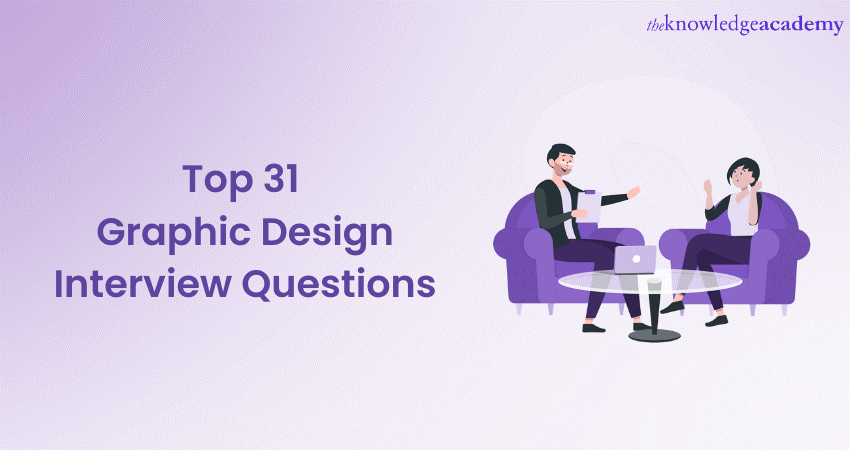
Graphic Designing is a dynamic and creative profession that plays a crucial role in visually communicating ideas, messages, and concepts. Aspiring Graphic Designers often face interviews that evaluate their skills, knowledge, and compatibility with the part. To help you prepare effectively, this blog presents the most common Graphic Design Interview Questions to help you crack your interview to get hired on the first attempt.
Table of Contents
1) What is Graphic Designing?
2) Who is a Graphic Designer?
3) Top 31 Graphic Design Interview Questions and Answers
4) Conclusion
What is Graphic Designing?
Graphic Design is a dynamic and interdisciplinary field that involves the creative and strategic use of visual elements to communicate messages, information, and ideas. It encompasses the art of combining typography, images, colours, shapes, and other design elements to produce visually appealing and Effective Communication materials. These materials range from traditional print designs like brochures, posters, and magazines to digital designs for websites, mobile apps, social media, and more.
At its core, Graphic Design aims to convey information and evoke emotions through visual storytelling. Designers leverage their creativity, technical skills, and understanding of Design Principles to transform abstract concepts into tangible visuals that resonate with their target audience. Effective Graphic Design captures attention and delivers a clear and memorable message while maintaining a harmonious balance between aesthetics and functionality.
Try our Motion Graphics Masterclass today and start your Career!
Who is a Graphic Designer?
A Graphic Designer specialises in creating visual solutions that effectively communicate messages, concepts, or ideas. These professionals use their artistic flair, technical know-how, and a thorough understanding of design principles to craft visuals that resonate with specific audiences and achieve particular goals. Graphic Designers work across various industries, collaborating with clients, colleagues, and stakeholders to bring their creative visions to life.
A Graphic Designer's role extends beyond just creating visually pleasing images. They must also possess problem-solving skills, adaptability, and the ability to work within constraints such as client preferences, brand guidelines, and project deadlines. Graphic Designers must stay updated with the current design trends, software tools, and technological advancements to maintain their competitive edge in the ever-evolving design landscape.
Top 31 Graphic Design Interview Questions
In this section let's discuss a comprehensive list of the top 31 Graphic Design Interview Questions and answers, covering a wide range of topics and skills.
Can you explain the design principles you consider while creating a visual composition?
This question assesses your understanding of fundamental design principles like balance, contrast, alignment, proximity, and repetition. In your previous work, provide examples of applying these principles to create visually appealing designs.
Example: "When creating a visual composition, I adhere to design principles like balance. For instance, in a recent poster project for a music festival, I balanced the vibrant visuals on one side with the event details on the other, creating a harmonious layout that drew attention to both elements."
What tools and software are you proficient in?
Showcase your familiarity with industry-standard tools such as Adobe Creative Suite (Illustrator, Photoshop, InDesign) or other relevant software. Highlight any specialised skills that set you apart.
Example: "I'm highly skilled in Adobe Creative Suite, particularly Photoshop, where I used advanced techniques to retouch product photos for an e-commerce website, enhancing the overall visual appeal."
How do you approach a design project?
Describe your step-by-step approach from research and creativity to wireframing, prototyping, refining, and final execution. Emphasise your ability to maintain a cohesive workflow.
Example: "My approach involves thorough research and ideation. For a web design project, I began by researching the target audience and competitors, then created wireframes to visualise the layout and interactions before moving on to the final design."
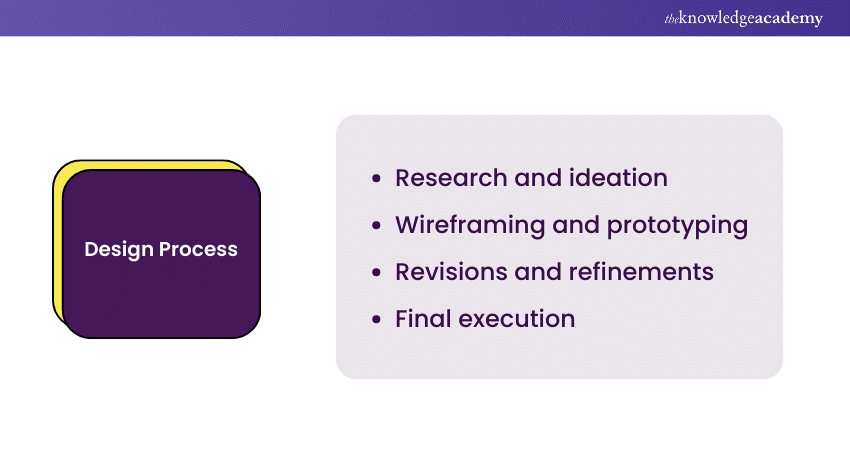
Can you provide examples of your previous work and explain your design choices?
Showcase your portfolio pieces and discuss the context behind your design decisions, highlighting your ability to align design choices with project goals and target audiences.
Example: "In redesigning a company's logo, I chose a modern font and simplified the icon to enhance its scalability and brand recognition. This ensured the logo looked great on both business cards and billboards."
What do you believe makes a design visually appealing and user-friendly?
Discuss the balance between aesthetics and usability. Explain how you prioritise user-centred design principles while maintaining a visually appealing design.
Example: "A design is visually appealing when it uses a balanced colour palette and clear typography. For a mobile app, I used soothing colours and a clean layout, making it easy for users to navigate and interact."
How do you stay up-to-date with current design trends?
Explain how you keep up with the latest industry trends through resources like blogs, design publications, online communities, and attending design conferences.
Example: "I regularly follow design blogs and attend design conferences. Recently, I integrated a subtle parallax effect into a website design after learning about its popularity and impact on user engagement."
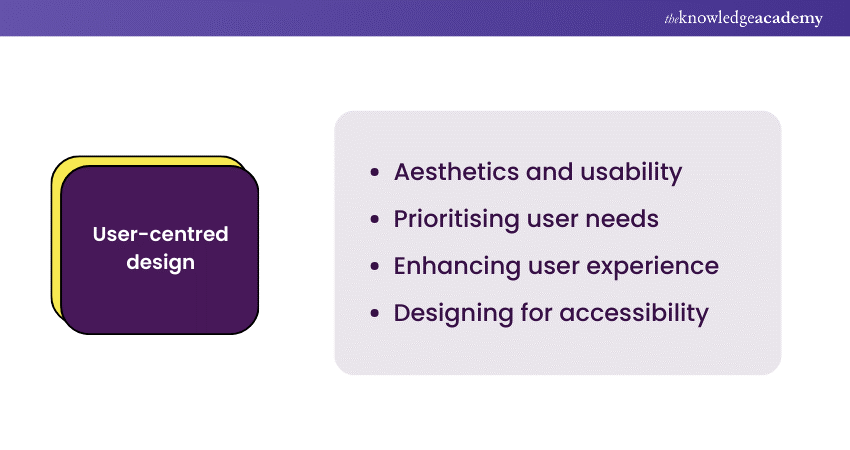
Can you describe a complex assignment you've worked on and how you overcame the obstacles?
Share an example of a project that posed difficulties and discuss how you approached problem-solving, adapted to challenges, and achieved successful outcomes.
Example: "Designing an infographic with complex data was challenging. To simplify, I created a hierarchy of information using colour coding and concise visuals, ensuring clarity and making the information easily digestible."
What role does colour theory play in your design process?
Discuss how you use colour theory to evoke emotions, convey messages, and ensure harmony in your designs. Provide examples of projects where your colour choices were deliberate.
Example: "In designing a restaurant menu, I used warm colours to stimulate appetite and placed complementary colours strategically to guide the viewer's eyes through the menu."
How do you handle constructive criticism of your work?
Explain your approach to receiving feedback with an open mind and using it to improve your designs. Emphasise your ability to collaborate and iterate based on feedback.
Example: "When a client suggested changes to a logo design, I appreciated their feedback and revised the design accordingly. Their input ultimately led to a more polished and effective logo."
Can you walk us through your understanding of typography and its importance in design?
Discuss the nuances of typography, including font selection, hierarchy, readability, and alignment. Share how typography choices can influence the overall design's impact.
Example: "Typography is pivotal in conveying a message. In a magazine layout, I used a classic serif font for headings to evoke sophistication while opting for a legible sans-serif for body text to enhance readability."
What is your experience creating print and digital media designs?
Highlight your versatility by discussing differences in design approaches between print and digital media, addressing factors like resolution, colour profiles, and format considerations.
Example: "I've designed event posters for print, carefully considering colour profiles and bleed areas. For digital media, I crafted social media graphics that maintained their quality and impact across different screen sizes."
How do you ensure your designs are accessible and inclusive to all users?
Explain your knowledge of accessibility standards, such as using alt text for images, proper colour contrast, and considering users with disabilities in your designs.
Example: "For a website redesign, adhered to WCAG guidelines, ensuring sufficient colour contrast for readability and implemented screen reader-friendly alt text for images."
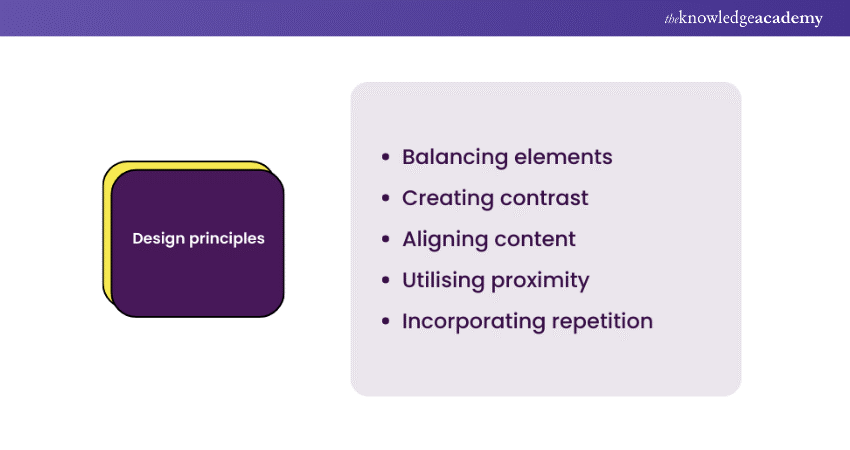
What is the significance of creating a brand identity, and how would you approach it?
Discuss the importance of a consistent visual identity and share your approach to creating brand assets that align with a brand's values and goals.
Example: "Brand identity fosters recognition and trust. When redesigning a startup's brand identity, I conducted in-depth interviews with stakeholders to capture their values, which were then reflected in the new logo, colour palette, and collateral materials."
Have you worked on any UX/UI projects? How do you integrate user-centred design principles?
Share your experiences with user interface and user experience projects. Describe how you prioritise user needs, navigation, and intuitive interactions.
Example: "In a mobile app project, I prioritised intuitive navigation by placing frequently used features within easy reach. User testing validated the design's effectiveness in enhancing the user experience."
Try our UX/UI Design Jumpstart Training and start your Career!
Can you explain the 'white space' concept and how you use it in your designs?
Discuss how negative space (white space) contributes to visual clarity, balance, and design readability. Share examples of designs where white space was effectively used.
Example: "White space, or negative space, provides visual breathing room. In a brochure, I employed white space to give text and images adequate separation, resulting in a clean and organised layout."
How do you manage your time when juggling multiple design projects?
Detail your Time-Management strategies, such as setting priorities, creating schedules, and using project management tools to meet deadlines efficiently.
Example: "I use project management tools to set deadlines and milestones for each project. In a recent instance, I successfully managed a rebranding project for a client while concurrently designing an event poster for another."
Could you discuss a design project where you had to compromise your creative vision?
Share a situation where you must balance creative expression and adhere to client preferences or project constraints. Highlight your adaptability and collaboration skills.
Example: "While designing a website for a client, I initially envisioned a vibrant colour scheme. However, after understanding their target audience's preferences, I adjusted the colour palette to reflect a more professional tone, achieving alignment with their goals."
What is A/B testing, and how might it apply to Graphic Design?
Explain how A/B testing can be used to test different design variations to determine which performs better regarding user engagement and conversions.
Example: "A/B testing involves comparing two design variations to determine which performs better. For a call-to-action button, I tested different colours and text to identify the version that yielded a higher conversion rate."
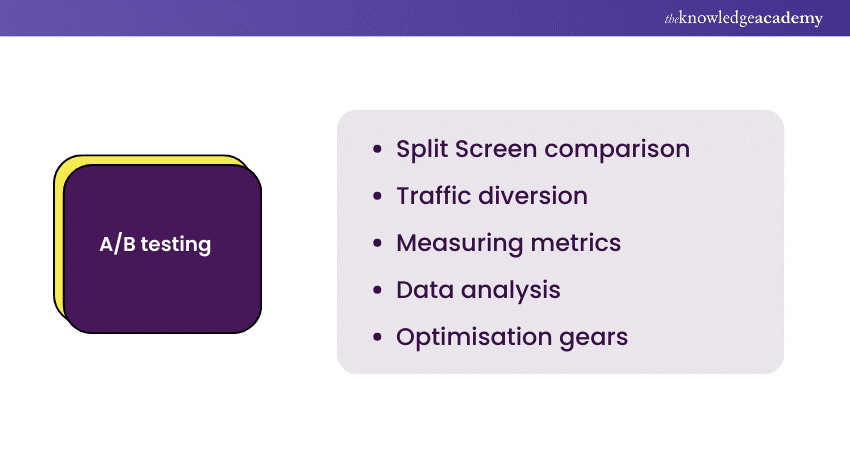
Can you share your process for creating a logo that captures the essence of a brand?
Walk through your logo design process, including research, concept generation, sketching, digitisation, and iterations based on client feedback.
Example: "When designing a logo for an eco-friendly brand, I incorporated natural elements like leaves and used earthy tones to convey sustainability, aligning the logo with the brand's core values."
How do you ensure consistency in design across different platforms and materials?
Describe your methods for maintaining a cohesive visual identity across various mediums, considering factors like colour consistency, typography, and branding guidelines.
Example: "I establish brand guidelines that outline colour codes, typography, and layout rules. These guidelines ensured consistent branding across a company's website, social media, and print materials."
Are you comfortable working in a team with other designers, developers, and clients?
Highlight your collaboration and communication skills, emphasising your ability to work effectively within interdisciplinary teams and manage client expectations.
Example: "I thrive in collaborative settings. I collaborated with developers to ensure seamless implementation of a website's design, and I regularly sought client feedback to ensure their vision aligned with the final product."
Can you discuss a recent design trend and its impact on the industry?
Analyse a current design trend and discuss its implications for design practices, user expectations, and how it might influence your design choices.
Example: "The rise of micro-interactions in user interfaces has greatly enhanced user engagement. Implementing micro-interactions, such as subtle animations in a mobile app, not only delights users but also improves usability."
What do you consider when selecting images for your designs?
Explain your criteria for choosing images that align with the design's message and resonate with the target audience, considering factors like relevance and visual impact.
Example: "I prioritise images that align with the design's narrative. For a travel brochure, I selected vibrant images that evoked the destination's beauty and cultural richness, immersing the viewer in the experience."
How do you handle a project with conflicting or vague design requirements?
Describe your approach to clarifying ambiguous requirements, seeking stakeholder input, and ensuring alignment before proceeding with the design process.
Example: "When faced with unclear requirements for a website redesign, I initiated thorough discussions with the client to acquire a deeper understanding of their vision, resulting in a design that effectively met their objectives."
Have you ever had to redesign a project? What were the reasons, and how did you approach it?
Share an example of a project that required redesign due to changing circumstances or feedback. Discuss how you leveraged insights from the initial design to improve the new version.
Example: "In redesigning a mobile app, user feedback indicated difficulties in navigating. I conducted a usability analysis and restructured the interface, resulting in a more intuitive and user-friendly design."
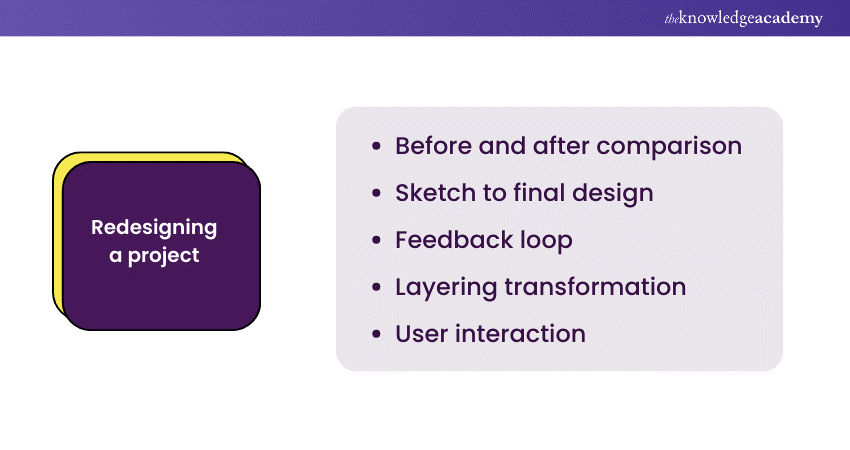
How do you deliver final design files to developers or clients?
Outline your methods for providing design assets in formats that facilitate smooth implementation, including specifications for colours, fonts, and image sizes.
Example: "I provide organised design files, including separate layers for assets. For a website project, I created a folder containing optimised image files, CSS stylesheets, and clear instructions, ensuring a smooth handover."
Can you discuss the balance between creativity and adhering to brand guidelines?
Demonstrate your ability to innovate within established brand parameters while maintaining visual consistency and brand recognition.
Example: "When designing social media graphics for a well-established brand, I infused creativity within brand guidelines by incorporating elements of the brand's logo and colour palette, maintaining a consistent visual identity."
How do you anticipate and design for different screen sizes and resolutions?
Explain your responsive design approach, ensuring your designs provide a consistent and user-friendly experience across various devices.
Example: "Designing a responsive website, I used a mobile-first approach. I ensured that the design looked and functioned well on various screen sizes, adapting layouts and typography accordingly."
What are your favourite design projects you've worked on, and why?
Share personal anecdotes about projects that you found particularly fulfilling or challenging, highlighting the aspects that made them stand out.
Example: "One of my favourite projects was designing a campaign for an environmental cause. I loved merging creativity with purpose, and the project's positive impact on raising awareness was truly rewarding."
How do you handle a design project requiring learning new tools or techniques?
Discuss your willingness to embrace learning opportunities and adapt to new challenges, highlighting instances where you successfully acquired new skills.
Example: "When tasked with creating animations for a client's website, I dedicated time to learning animation software. This allowed me to incorporate subtle animations that enhanced the user experience."
What inspired you to become a Graphic Designer, and how do you keep that passion alive?
Reflect on your motivations for entering the field, whether it's a love for art, communication, or problem-solving. Discuss how you nurture your creativity and passion over time.
Example: "My love for visual storytelling led me to Graphic Design. I remain passionate by engaging in personal projects, exploring new design styles, and continuously seeking inspiration from art exhibitions and nature."
Each question offers you a chance to showcase your expertise, thought process, and enthusiasm for Graphic Design. Remember to personalise your answers with examples from your experiences to create a strong impression during your interview.
Conclusion
Preparing for a Graphic Design Interview requires a well-rounded understanding of design principles, technical skills, and problem-solving abilities. After familiarising yourself with these top 31 explicit design Interview Questions, you can confidently approach your interview, showcasing your expertise and enthusiasm for the world of visual communication. Remember that each question lets you demonstrate your unique perspective and expertise, setting you apart as a standout Graphic Design candidate.
Frequently Asked Questions
Upcoming Business Skills Resources Batches & Dates
Date
 Virtual Graphic Designer Training
Virtual Graphic Designer Training
Fri 5th Jul 2024
Fri 13th Dec 2024







 Top Rated Course
Top Rated Course



 If you wish to make any changes to your course, please
If you wish to make any changes to your course, please


